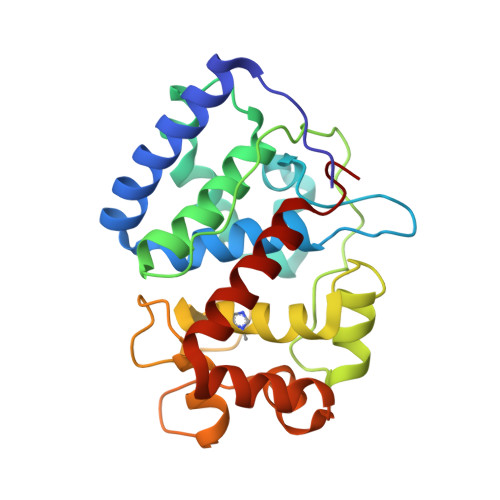A Chemically Programmed Proximal Ligand Enhances the Catalytic Properties of a Heme Enzyme.
Green, A.P., Hayashi, T., Mittl, P.R., Hilvert, D.(2016) J Am Chem Soc 138: 11344-11352
- PubMed: 27500802
- DOI: https://doi.org/10.1021/jacs.6b07029
- Primary Citation of Related Structures:
5L86 - PubMed Abstract:
Enzymes rely on complex interactions between precisely positioned active site residues as a mechanism to compensate for the limited functionality contained within the genetic code. Heme enzymes provide a striking example of this complexity, whereby the electronic properties of reactive ferryl intermediates are finely tuned through hydrogen bonding interactions between proximal ligands and neighboring amino acids. Here, we show that introduction of a chemically programmed proximal Nδ-methyl histidine (NMH) ligand into an engineered ascorbate peroxidase (APX2) overcomes the reliance on the conserved Asp-His hydrogen bonding interaction, leading to a catalytically modified enzyme (APX2 NMH), which is able to achieve a significantly higher number of turnovers compared with APX2 without compromising catalytic efficiency. Structural, spectroscopic and kinetic characterization of APX2 NMH and several active site variants provides valuable insights into the role of the Asp-His-Fe triad of heme peroxidases. More significantly, simplification of catalytic mechanisms through the incorporation of chemically optimized ligands may facilitate efforts to create and evolve new active site heme environments within proteins.
- School of Chemistry & Manchester Institute of Biotechnology, The University of Manchester , 131 Princess Street, Manchester M1 7DN, U.K.
Organizational Affiliation:



















